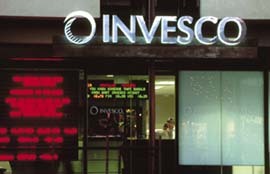Electric Signs
Research and Study Help Your Sales Grow
Understand advertising before proposing a moving-message display
Published
18 years agoon

Various applications for moving-message sign technologies are forms of programmable visual communication. Formerly called message centers, they feature lines of text messages that can be programmed with timely information, typically advertising. Even though moving-message technologies and their applications have grown significantly more sophisticated recently, they’re still used predominantly as advertising.
A veteran in the electronic-sign industry, I’m frequently asked how a novice might quickly learn electronic technologies. My answer remains the same: Ignore the technology; learn about advertising first.” Technology is only a tool. If you don’t first learn the sign’s purpose, you can never adequately sell it.
Back to basics
To assess the value of a moving-message advertising opportunity, ask a few basic questions:
- How big is the audience? How many cars or pedestrians pass the location? The size of the audience determines the total number of exposures. State or local departments of transportation (some states, such as California, even post traffic counts on their Websites) provide this information. Multiply the traffic count by 1.35 (the average number of adults per vehicle, according to the traffic audit bureau), to obtain the size of the audience.
- How much time does it take to read the advertising? The amount of available time determines the exposure’s effectiveness. It also helps determine the type and configuration of the technology. From the first unobstructed view at the sign location, measure how many seconds it takes for a vehicle to drive to the sign location.
- How large should the sign be to serve as an effective tool? The size of the sign affects the quality of the exposure. For text-oriented messages, calculate at least one inch of readable copy for each
50 ft. of distance.
- What will the local sign ordinance allow? Don’t make the call if the sign ordinance prohibits what the customer needs.
Before the first conversation with a customer, you need to understand each of the preceding points. Why? Because, you aren’t selling a sign — you’re selling an advertising medium. Commercial signs cost between $10 and $100 per sq. ft., whereas moving-message signs cost between $500 and $25,000 per sq. ft. By knowing the difference between a sign and a place-based visual-advertising display, you can justify cost in comparison to advertising rates, rather than as a blind expenditure.
Learning about advertising
The Internet offers almost endless research on any subject, and advertising is certainly no exception. When I write a story or prepare a presentation, I first research the Internet. Some excellent Websites offer insights into the value of roadside advertising, relative to other media.
For example, visit the site of the Outdoor Advertising Assn. of America (www.oaaa.org), the billboard industry’s lobbying group. Pay particular attention to the information listed under the heading “Facts and Figures,” where a wonderful table lists industry averages for a relative measure of ad value known as “cost per thousand exposures” (CPM), the most common measure of advertising value. This chart helps justify the value of a proposed display. Likewise, examine the information under the heading of “Sales and Marketing,” which provides tips for conveying value in a down economy.
Other excellent sources of information may be found on major outdoor companies’ corporate sites. One of the best, Viacom Outdoor’s site (www.infoutdoor.com) features the heading “Why Outdoor.” Click on the subheading “Why Outdoor Works,” which documents the value of outdoor advertising, in particular, moving-message, on-premise advertising. The site compares the value of outdoor to that of most other media.
Another valuable site, Adams Outdoor Advertising (www.adamsoutdoor.com) features insightful narratives and valuable quotations that substantiate the value of advertising to mobile markets. Look under the heading, “Why Outdoor,” and at each subheading. Also, visit the “Research/Case Studies” section, which lists organizations and Websites that provide industry research, plus success stories.
When reading information on these sites, consider how it might relate to moving-message sign advertising. In almost every scenario, on-site moving-message displays offer at least as much as outdoor, with a few notable, positive additions:
- A moving-message sign has the added advantage of being “place-based” in front of the very business it advertises. Therefore, the viewer makes a logical and immediate link between the business’ products and services and its location. In front of a business, a moving-message sign is known as “primary, mobile-market advertising.”
- Movement draws attention. Be-cause the advertising message moves, it imparts a beacon effect, similar to a flashing warning light.
- Because moving-message displays provide changeable information, the mobile market looks to them for updates. The national average indicates that a traveler passes a location at least 20 times per month. The sign becomes a landmark for such travelers.
Cost comparisons
The Department of Transportation provides a daily traffic count of cars passing a given location, adjusted as noted previously. Multiply that number by 30 for a total monthly exposure.
By converting a proposed display’s cost into a monthly figure (for a typical leased sign, multiply 0.022 by the sale price), you can obtain a CPM to compare with other media. Simply divide the total monthly exposure by 1,000, then divide that number into the monthly cost.
For example, multiply a traffic count of 75,000 cars per day by the 1.35 adjustment, then by 30 days, which equals 3,037,500 adults per month. Next, multiply the sale price of a sign (say, $135,000) by 0.022, which equals approximately $3,000 per month. Finally, 3,037,500 equals 3,037.5 thousands; $3,000 divided by 3,037.5 equals $0.99 CPM.
Measuring CPM exposures against the comparative cost of almost any other advertising brings home the low cost of an electronic advertising display.
Advertising impact
Relative comparisons customized for a particular business help me sell moving-message displays. In order to form a comparison, it’s imperative to have some working knowledge of that business and the advertising habits of those in the particular industry. Ask yourself the following questions:
- Is this business a part of a chain or an individual retailer?
- From what location does this business draw its customers?
- What do I know about the advertising patterns of this type of business?
A detailed study of a retailer’s advertising expenditures proves invaluable when preparing a proposal which asks the customer to consider changing his media mix. If you were researching, say, an auto dealer, www.nada.org takes you to the National Auto Dealers Assn. Website, where you can determine the average advertising expenditure, by region, of individual auto dealerships, plus the predominant media for car dealers.
This information, combined with the generalized media information gleaned from other research, helps prepare a compelling argument for the addition of an on-premise, electronic advertising display for a dealer’s location.
Almost every industry is represented by an organization with a Website. Learning more about a business may lead to picking up extra knowledge that helps you understand its advertising needs.
The bottom line
Click on your computer, kick up a search engine, and start researching. Study the value of moving-message displays as an advertising medium to bolster prospects for large display sales. If you study a customer, individually and by market segment, you can confidently say, “I’d like a few minutes of your time to introduce a new medium that will expand your visibility and reach, while saving you money.”
Good selling!

SPONSORED VIDEO
Introducing the Sign Industry Podcast
The Sign Industry Podcast is a platform for every sign person out there — from the old-timers who bent neon and hand-lettered boats to those venturing into new technologies — we want to get their stories out for everyone to hear. Come join us and listen to stories, learn tricks or techniques, and get insights of what’s to come. We are the world’s second oldest profession. The folks who started the world’s oldest profession needed a sign.
You may like

Mimaki USA Introduces New Ink Cartridge

Orbus Acquires CRĒO Industrial Arts

17 Sneak Peeks at the American Sign Museum Main Street Expansion
Subscribe

Bulletins
Get the most important news and business ideas from Signs of the Times magazine's news bulletin.
Most Popular
-

 Projects1 week ago
Projects1 week ago4 of the Most Fun Sign Projects in Years
-

 News1 week ago
News1 week ago2024 Sign Contest Open for Submission
-

 How To1 week ago
How To1 week agoMaking the Grade with ADA Signs
-

 Real Deal2 days ago
Real Deal2 days agoA Family Sign Company Foists Their Youngest Upon the Business
-

 Editor's Note3 days ago
Editor's Note3 days agoThe Joy of Working
-

 News2 days ago
News2 days agoWoman Found Living Inside Supermarket Sign
-

 Product Buying + Technology4 days ago
Product Buying + Technology4 days agoEco-Solvent Printers: Workhorses of a Signshop’s Stable
-

 News1 week ago
News1 week agoSign Company Owner Meets Travis Kelce

















